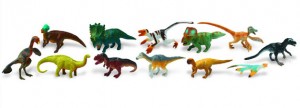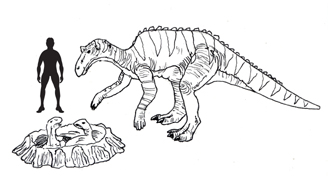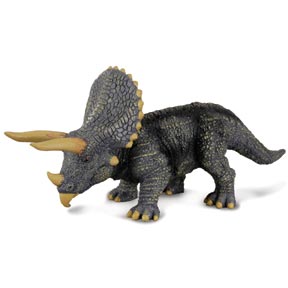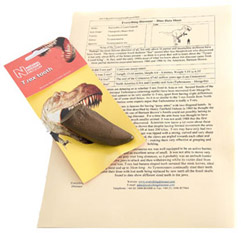“Locavores” – Eating only Locally Sourced Food a Good Idea!
“Locavores” – Eating only Locally Sourced Food
During one of our tea breaks yesterday, in between packing orders, reviewing new products, talking with suppliers and all the other things we do to run the business, the topic of new words in the English language came up. Language like organisms, adapts and evolves, new words are coming into being whilst other words lapse out of common usage and towards the lexicographers equivalent of extinction. The fundamentals of Darwinism can be applied to the language we speak.
Locavores
One new word we have come across is “locavore” , a word none of us would have recognised six months ago, but now it is appearing in newspaper articles, magazines and has even been used in conversations down our town’s single street. A locavore is someone who sources all they eat within their local area, preferring to fore-go items such as bananas for seasonal fruit and vegetables purchased from nearby growers.
Like many new words and phrases entering the English language, this word has its origins in another country, we think this term is an Americanism. An article in the Times on the subject mentioned that the American novelist Barbara Kingsolver spent a year living as a locavore, sourcing all her food from her own small holding. For those of us without their own farm, being able to obtain everything in your diet from local growers and suppliers sounds like a daunting task, especially when this is compared to the convenience of a trip to the local supermarket.
Changing Habits
Many small retailers are being forced out of business as the big supermarket chains dominate our shopping. Within our own small town, we have two supermarkets at the moment, plus a Tesco high street store. Tescos intend to open another supermarket in town, they are currently holding a consultation programme over this proposed new venture.
I hope the two butchers we have in the high street, the only local purveyors of food left are able to withstand this onslaught. Tescos for example have a 30% share in UK grocery spending and made a profit of £2.5 billion – that’s almost as much as the oil companies are making. Not a bad little business if you are earning £79 per second!
As a reformed shopper myself, it would be a shame if local businesses were forced to close due to competition from the supermarket giants. I used to do all my shopping at supermarkets, it was convenient and everything I needed was under one roof. The threat of global warming and the issue of a” carbon footprint” were not so prominent in the public’s conscience.
Supermarkets
Supermarkets are often thought to be cheaper as well as more convenient. As I wander round the aisles, armed with my carefully thought out shopping list I inevitably succumb to the numerous offers that are available, the “buy one get one free” or the “special offer syndrome” as I call it. This results in my shopping trolley becoming filled with items that when I set out to do my shopping I had no intention of buying. The supermarkets are very clever with their marketing and sales promotions, I do seem to be seduced by all these special offers and often end up spending more that I intended.
However, over the last few months there has been a conscious effort on my part to try to cut down on my supermarket spending. The only thing we purchase from Tescos on a regular basis is milk. One of the team members pops out twice a week to the Tescos in the high street to purchase the milk, essential for our tea breaks. Meat is brought from one of the high street butchers and once a week I travel to a nearby town to purchase my vegetables and fruit (a visit to a greengrocer, one of the very few still around).
Next door to the greengrocer is a fish shop, whilst I accept that the fish has hardly been sourced locally I have begun to enjoy perusing the display, I have learned what certain species of fish look like, in the past, fish was purchased in the supermarket, pre-filleted and presented in a vacuum packed plastic container. I can now distinguish a mackerel from a sardine, a feat beyond me a few months ago, but a new skill hardly likely to impress my colleagues at work. However, I get a lot of satisfaction from being able to eyeball the fish that I am about to choose for my Sunday supper.
As a Cornish, line caught mackerel lies on the fish counter awaiting the attentions of the fishmonger who will fillet it for me, I get a sense of appreciation as to where my food comes from and what it means.
Value for Money?
Interestingly, the concept of supermarkets being generally cheaper and better value for money compared to a local shop was debunked not long after I started to take more care over my shopping. It was the chicken breasts that did it for me, in the past I would purchase two chicken breasts from a supermarket (usually Sainsburys), popping a cellophane wrapped packet into my shopping trolley as I passed the meat counter without giving it a second thought.
Now I have discovered that chicken breasts come in slightly different sizes and not only that, but a single, plump, succulent chicken portion sourced from my local high street butcher, is ample for my needs. One butcher’s portion is the equivalent of two supermarket chicken breasts, so it is not really that expensive and it has the added benefit of tasting better.
I am not going to eulogise over the concept of becoming a locavore, I can’t see myself agreeing to the premise of never eating a banana again, but I have begun to see their point. However, this type of behaviour is not new to our species, H. sapiens has been a locavore for the vast majority of its existence. Our ancestors, sourced all their dietary requirements from local sources. Granted if you lived to 30 years of age in the Mesolithic you were considered ancient and the average cave woman had a 35 inch waist, they had no choice but to do this.
Scientific Papers on Early Human Settlements
When reviewing scientific papers on human settlements, the carefully excavated and documented rubbish dumps of our ancestors reveal that they were true devotees to the locavore concept. In essence, they had little option, but we seem to have survived and flourished as species long before the notion of the out-of-town hypermarket came into being.
Having had the opportunity to go to Africa, it is interesting to compare shopping at the local market with the visit to the giant, gleaming supermarket. One thing that struck me was the constant chatter between the shoppers and the shoppers and the stall holders. People talked about food, shopping was a social event, there was the hustle and bustle of selecting produce against a background of constant chattering and noise. Although more time consuming, this was fun!
African Experiences
Contrast my African experiences with a shopping trip to a supermarket, I wander round the gondolas and aisles oblivious to the other shoppers. There can be hundreds of people shopping at the same time as you, but there is almost a deathly hush surrounding the whole experience, nobody talks.
The origins of our own species remain unclear, we are believed to have first evolved around 190,000 years ago (although some scientists argue that we have been around for longer than this). Our ancestors ability to adapt coupled with their tool making skills and mobility made them into highly efficient hunter/gatherers. A sedentary lifestyle has only recently been adopted by our kind and even then for the vast majority of our existence in settlements we have grown our own food and supplemented it from other local sources.
If we take Western Europe as a model for the behaviour of our entire species, we have only begun to source food from beyond our local environment over the last 500 years or so. The supermarket is a very new idea when compared to the history of our species, with the first supermarket type stores opening in the UK in the early 20th century. We have calculated that the human race as lived as “locavores” for 99.76% of our history and for just 0.05% of our existence living with the concept of the supermarket.
So if you are at a dinner party and someone begins to comment on how they have adopted this new idea of being a locavore, you can point out that in essence we are merely returning to our roots. Roots like the carrots purchased from my local greengrocer, covered in soil and in all sorts of shapes and sizes just like carrots are supposed to be.
Visit Everything Dinosaur’s website: Visit Everything Dinosaur.







